Family: Cephidae
Family common name: stem sawflies
Subfamily: Cephinae
Genus: Trachelus Jurine, 1807
Subgenera: none
The Cephidae are commonly known as stem sawflies because larvaelarva:
the immature stage of holometabolous insects
 feed and live within the stems of small herbaceousherbaceous:
feed and live within the stems of small herbaceousherbaceous:
describing a plant that does not have a woody stem and is often close to the ground; e.g., grasses, forbs, and vegetable plants
and woody plants. Many are considered pests, since this feeding behavior can damage or even kill the plant host (Shanower and Hoelmer 2004Shanower and Hoelmer 2004:
Shanower TG and Hoelmer KA. 2004. Biological control of wheat stem sawflies: past and future. Journal of Agricultural and Urban Entomology 21 (4): 197-221.).
Stem sawflies of the genus Trachelus are generally slender, with slightly laterally compressed cylindrical bodies. They have a black head and black body often with yellow markings. There is a slight constriction at the second abdominal segment, giving it the gestalt of a wasp (Middlekauff 1969Middlekauff 1969:
Middlekauff WW. 1969. The cephid stem borers of California (Hymenoptera: Cephidae). Bulletin of the California Insect Survey 2: 1-25.). Often the wings are darkened or violaceous. Average body length is about 10 mm (Ries 1937Ries 1937:
Ries DT. 1937. A revision of the Nearctic Cephidae (Hymemoptera: Tenthredinoidea). The American Entomological Society 63 (3): 259-327.).
Worldwide, there are only eight described species, restricted to the North Hemisphere. Only one occurs in North America (Taeger et al. 2010Taeger et al. 2010:
Taeger A, Blank SM, and Liston AD. 2010. World Catalog of Symphyta (Hymenoptera). Zootaxa 2580: 1-1064.).
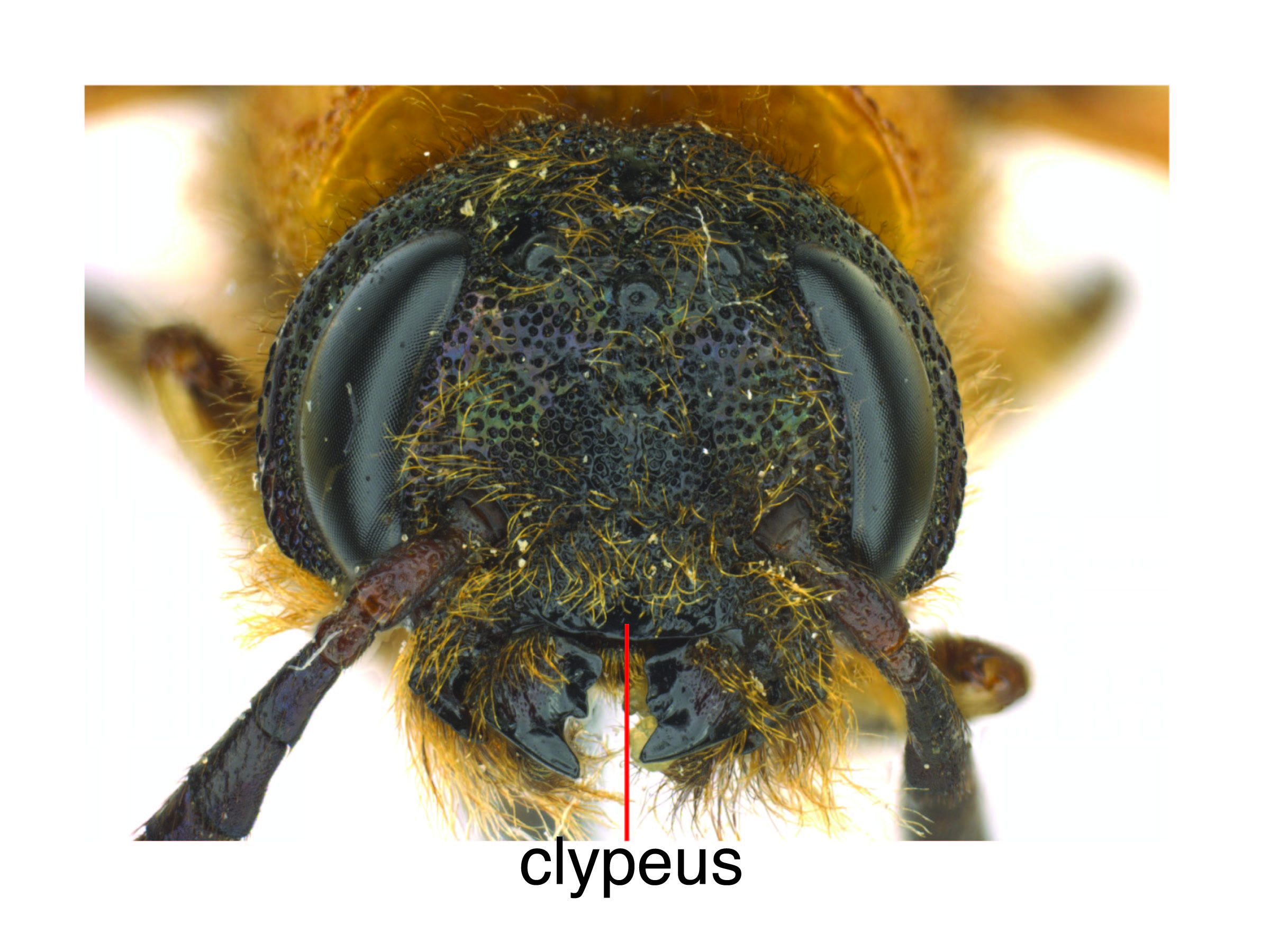 and mandibles asymmetrical, larger on the right side (Ries 1937Ries 1937:
and mandibles asymmetrical, larger on the right side (Ries 1937Ries 1937: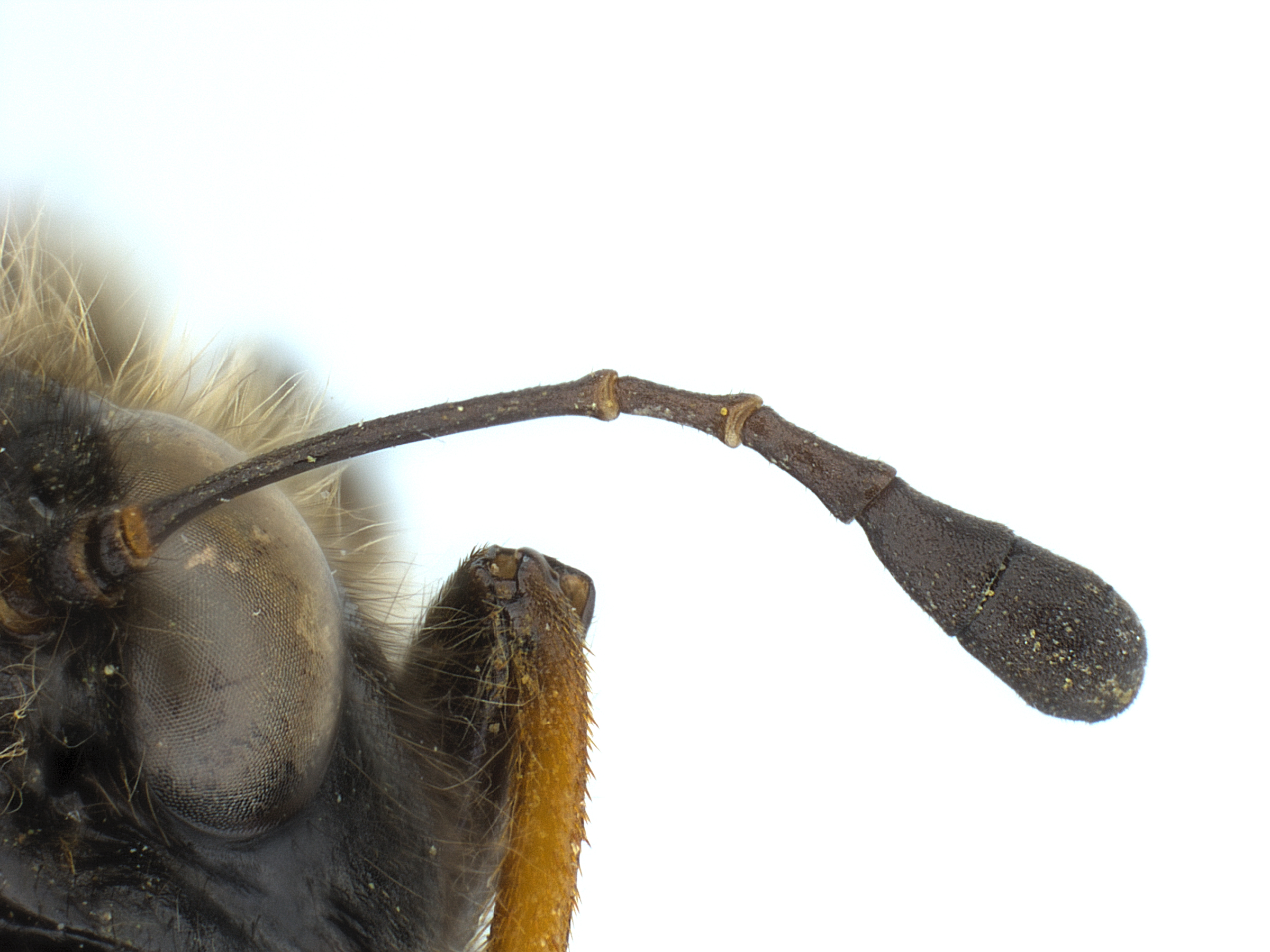 beyond sixth or seventh segment (Ries 1937Ries 1937:
beyond sixth or seventh segment (Ries 1937Ries 1937: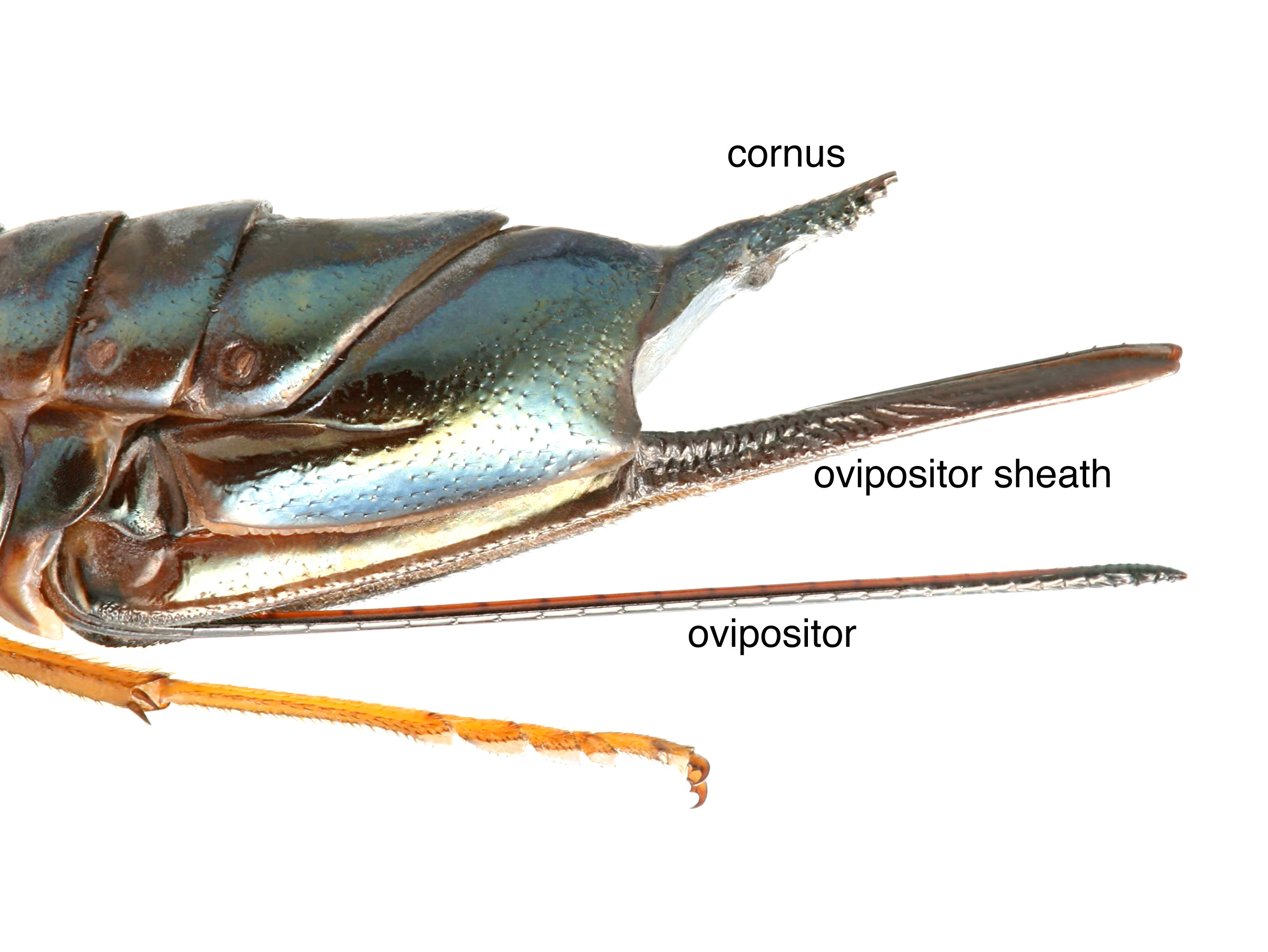 sheath slightly broadened at the apexapex:
sheath slightly broadened at the apexapex: wider than tibiatibia:
wider than tibiatibia: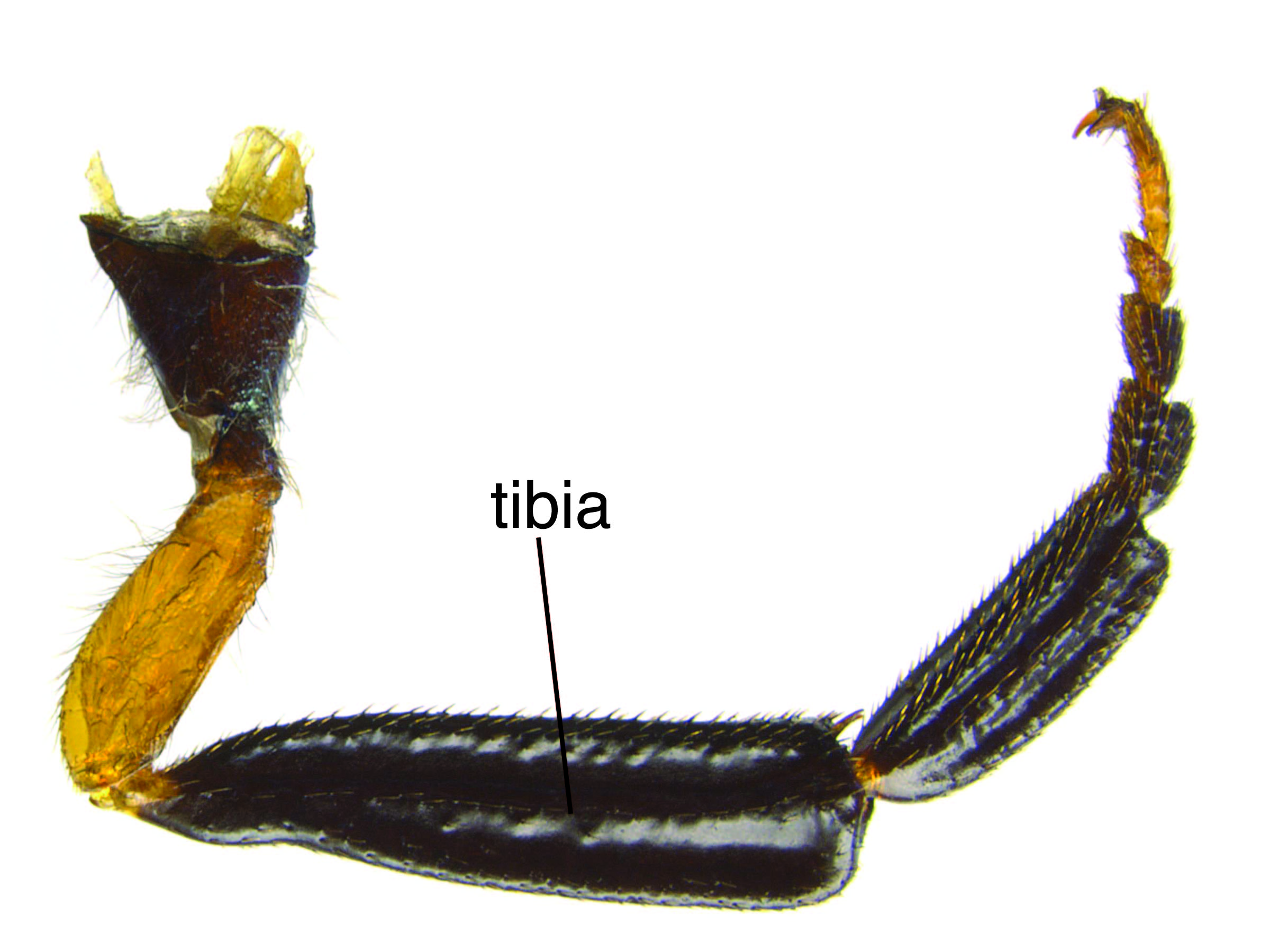 (Middlekauff 1969Middlekauff 1969:
(Middlekauff 1969Middlekauff 1969: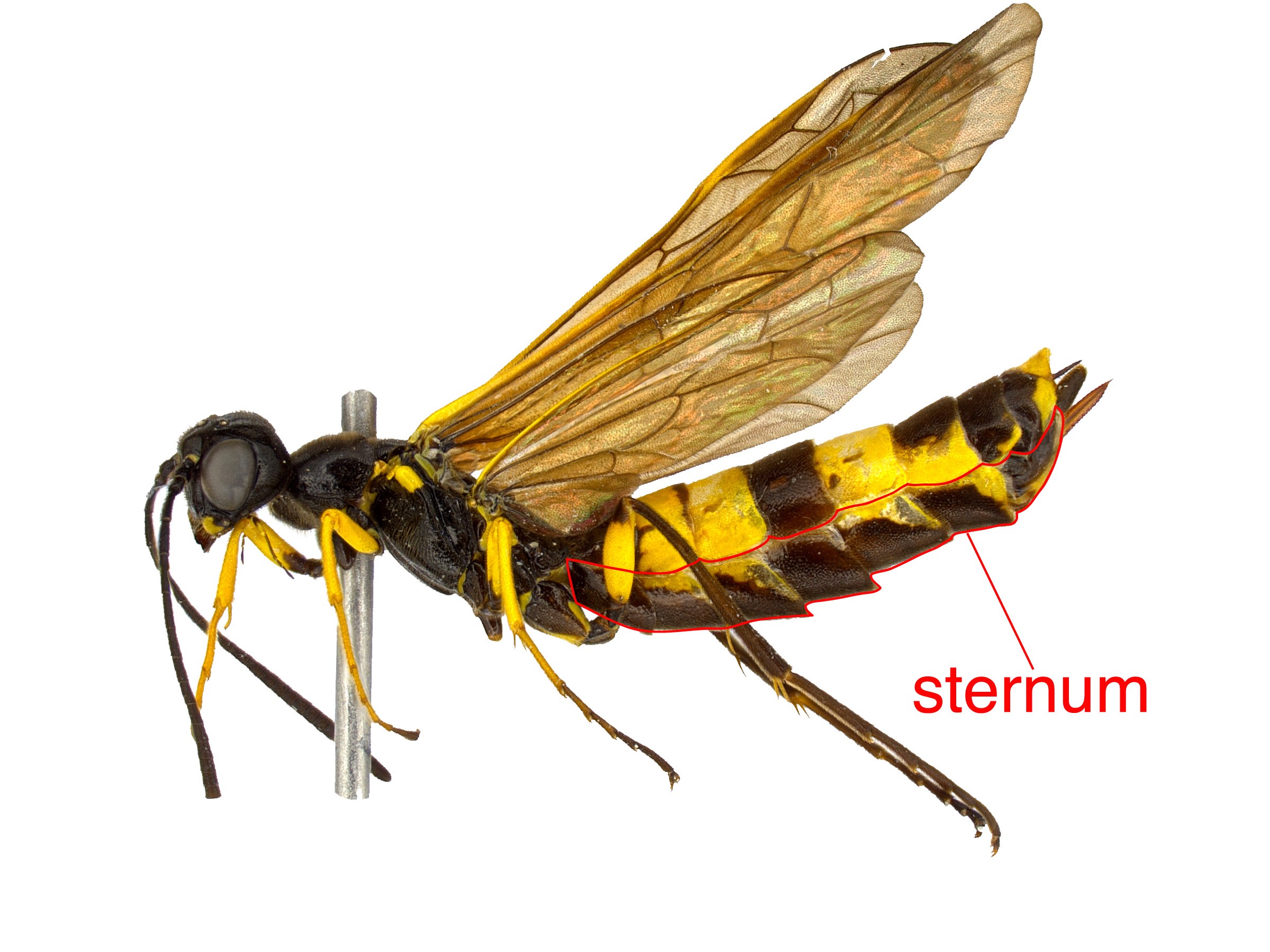 7–8 of the male (Ries 1937Ries 1937:
7–8 of the male (Ries 1937Ries 1937:All Cephidae can be distiguished from other sawfly families by the lack of cenchricenchrus:
a sclerotized eliptical lobe on the metascutum used to provide friction with underside of wings to hold them in place on the dorsum of the body while in rest
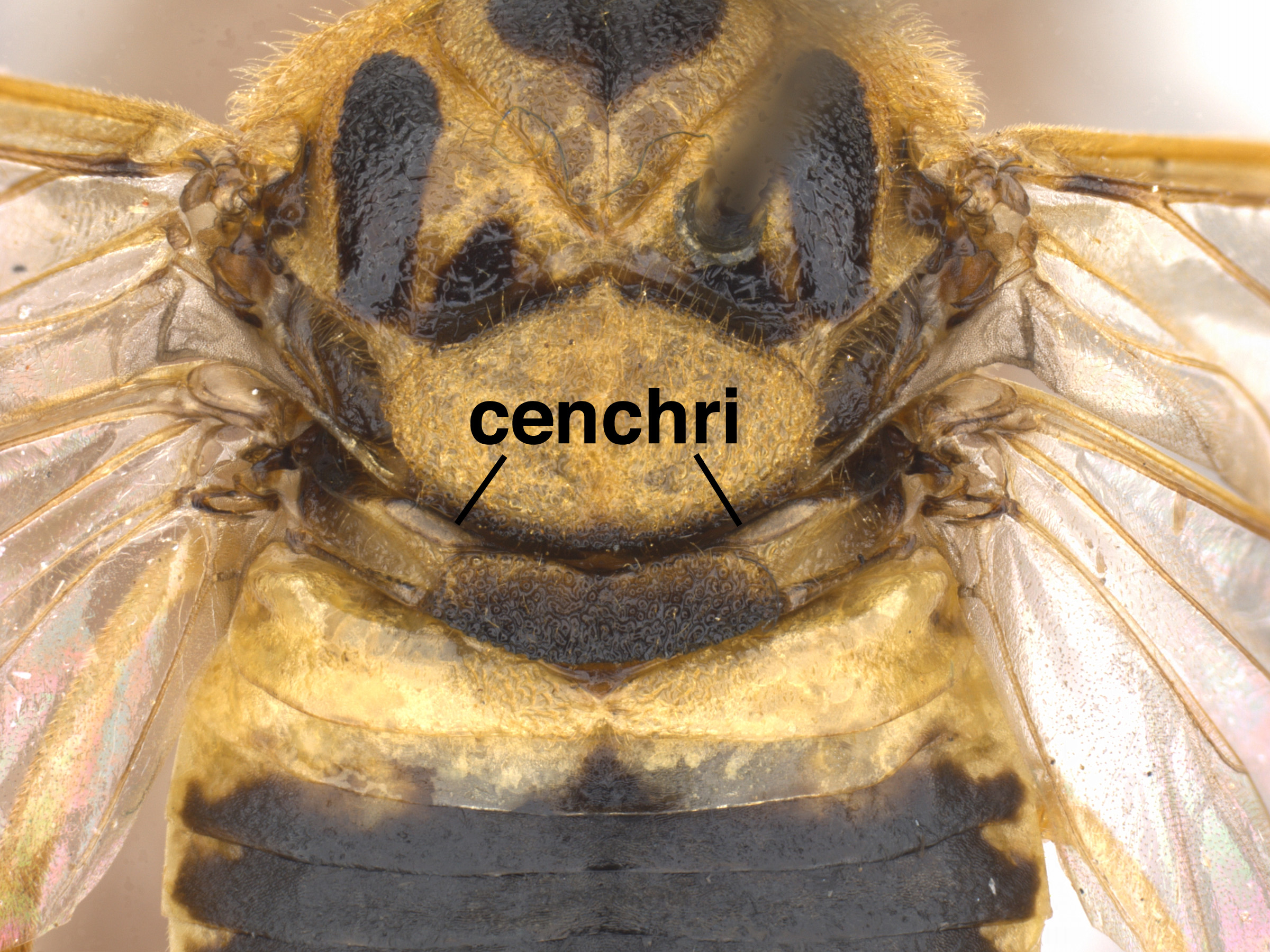 . Trachelus can be confused with other Cephidae, especially Cephus and Calameuta, which were once treated as synonyms. They can be distinguished from Cephus and Calameuta by the presence of U-shaped bristles, pits on the 7th and 8th male sternumsternum:
. Trachelus can be confused with other Cephidae, especially Cephus and Calameuta, which were once treated as synonyms. They can be distinguished from Cephus and Calameuta by the presence of U-shaped bristles, pits on the 7th and 8th male sternumsternum:
the ventral area of the thorax or abdomen
 , and from other genera in the family presence of preapicalpreapical:
, and from other genera in the family presence of preapicalpreapical:
close to, but anterior to, the apex
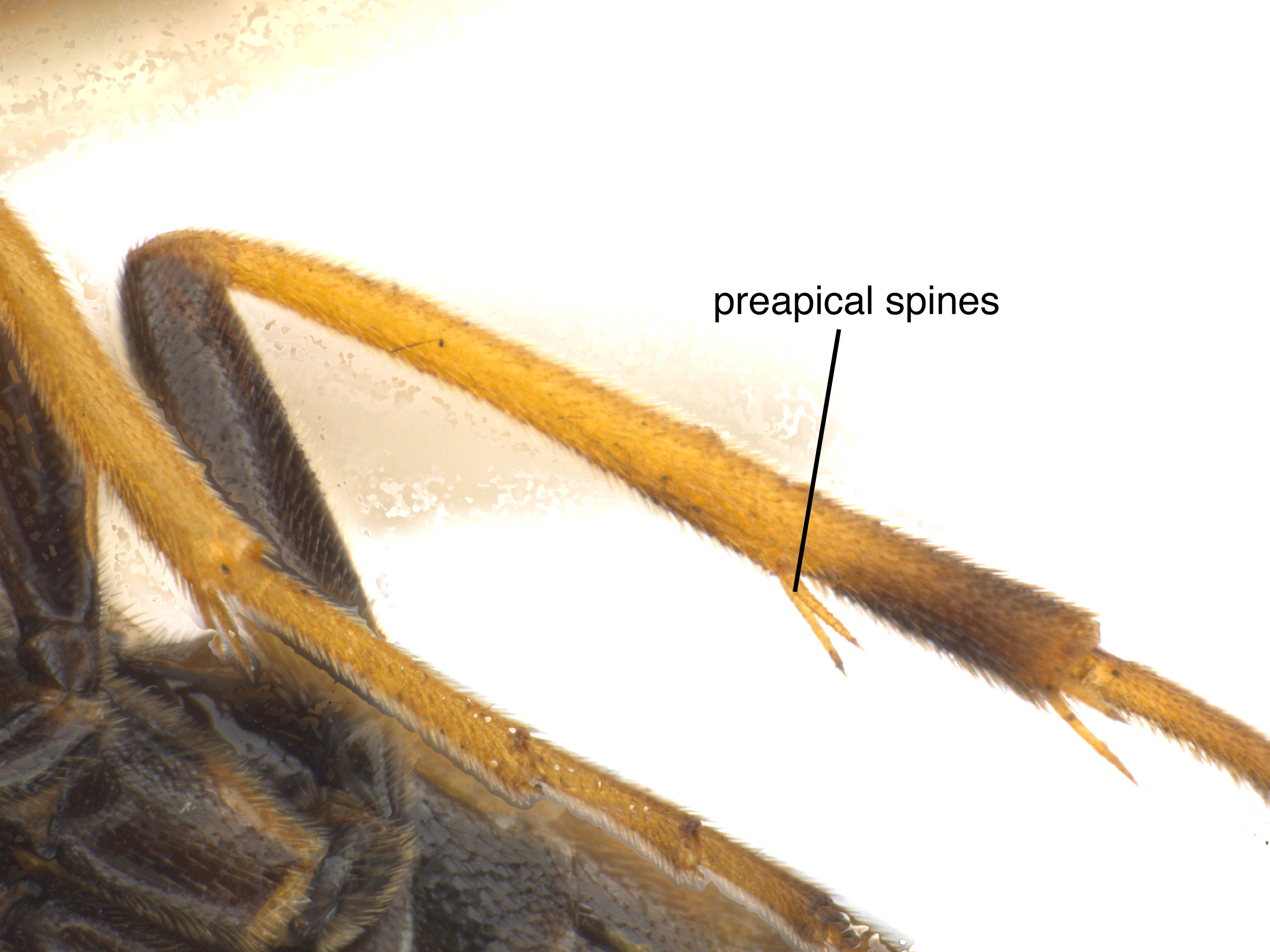 spurs on the hind tibiaetibia:
spurs on the hind tibiaetibia:
the fourth segment of the leg, between the femur and the tarsus
 , flagellomereflagellomere:
, flagellomereflagellomere:
A segment of the flagellum of the antenna
 3 subequal to 4, and the distinctly clavateclavate:
3 subequal to 4, and the distinctly clavateclavate:
club-like, thickening toward the tip; often used to describe antennae
 antennaeantenna:
antennaeantenna:
the sensory organ emerging from the front of the head, usually between the compound eyes and above the clypeus; includes the flagellum, scape and pedicel
 beginning past the midpoint (Ries 1937Ries 1937:
beginning past the midpoint (Ries 1937Ries 1937:
Ries DT. 1937. A revision of the Nearctic Cephidae (Hymemoptera: Tenthredinoidea). The American Entomological Society 63 (3): 259-327., Middlekauff 1969Middlekauff 1969:
Middlekauff WW. 1969. The cephid stem borers of California (Hymenoptera: Cephidae). Bulletin of the California Insect Survey 2: 1-25., Smith and Schiff 2005Smith and Schiff 2005:
Smith DR and Schiff NM 2005. A new western Nearctic species of Calameuta Konow (Hymenoptera: Cephidae). Proceedings of the Entomological Society of Washington, 107 (4): 864-868.).
none
In North America, Trachelus species feed on cultivated grasses of the family Poaceae, most commonly Triticum spp. (wheat), but also Secale cereale (rye), and Hordeum vulgare (common barley). There are no records of this species feeding on non-cultivated or wild species of these genera or related plants (Shanower and Hoelmer 2004Shanower and Hoelmer 2004:
Shanower TG and Hoelmer KA. 2004. Biological control of wheat stem sawflies: past and future. Journal of Agricultural and Urban Entomology 21 (4): 197-221.).
Female Trachelus oviposit into larger-diameter stems of grasses (Middlekauff 1969Middlekauff 1969:
Middlekauff WW. 1969. The cephid stem borers of California (Hymenoptera: Cephidae). Bulletin of the California Insect Survey 2: 1-25., Shanower and Hoelmer 2004Shanower and Hoelmer 2004:
Shanower TG and Hoelmer KA. 2004. Biological control of wheat stem sawflies: past and future. Journal of Agricultural and Urban Entomology 21 (4): 197-221.). After hatching, the larvalarva:
the immature stage of holometabolous insects
 feeds on the vascular tissue of the plant, moving downwards towards the basebase:
feeds on the vascular tissue of the plant, moving downwards towards the basebase:
the beginning or most proximal area of any structure
(Shanower and Hoelmer 2004Shanower and Hoelmer 2004:
Shanower TG and Hoelmer KA. 2004. Biological control of wheat stem sawflies: past and future. Journal of Agricultural and Urban Entomology 21 (4): 197-221.). LarvaeLarva:
the immature stage of holometabolous insects
 are creamy white and grub-like in appearance. They lack abdominal prolegs, and thoracicthoracic:
are creamy white and grub-like in appearance. They lack abdominal prolegs, and thoracicthoracic:
of or on the thorax
prolegs are vestigial. Cephidae larvaelarva:
the immature stage of holometabolous insects
 possess a tubular dorsaldorsal:
possess a tubular dorsaldorsal:
of or on the top surface of the body or structure
horn on the posterior end of the body (Middlekauff 1969Middlekauff 1969:
Middlekauff WW. 1969. The cephid stem borers of California (Hymenoptera: Cephidae). Bulletin of the California Insect Survey 2: 1-25.). As the larvalarva:
the immature stage of holometabolous insects
 feeds, it uses this horn to pack frassfrass:
feeds, it uses this horn to pack frassfrass:
solid larval excrement
in the gallery behind it. At the basebase:
the beginning or most proximal area of any structure
of the plant, the larve “girdles” the stem above it by chewing a V-shaped notch along the inner wall, then packs frassfrass:
solid larval excrement
tightly between itself and this point. When the plant weakens and dies from the damage, it breaks off at this point and leaves a stub in the ground with a frassfrass:
solid larval excrement
plug on top, keeping the larvalarva:
the immature stage of holometabolous insects
 safe inside (Shanower and Hoelmer 2004Shanower and Hoelmer 2004:
safe inside (Shanower and Hoelmer 2004Shanower and Hoelmer 2004:
Shanower TG and Hoelmer KA. 2004. Biological control of wheat stem sawflies: past and future. Journal of Agricultural and Urban Entomology 21 (4): 197-221.).
Larvae generally undergo a period of diapausediapause:
a non-active period of no development; sawflies often enter diapause as a prepupa or pupa to overwinter
, either over winter or through a dry season, then pupate inside the stub. After about 2 weeks, the adult chews or pushes its way out of the stub and emerges. In cultivated crops, adults live for 3–4 weeks and are univoltineunivoltine:
describing an insect with a life cycle of one generation per year
(Shanower and Hoelmer 2004Shanower and Hoelmer 2004:
Shanower TG and Hoelmer KA. 2004. Biological control of wheat stem sawflies: past and future. Journal of Agricultural and Urban Entomology 21 (4): 197-221.).
Trachelus tabidus, commonly known as the “black grain-stem sawfly” is considered a pest of wheat crops in North America, where it was introduced in the 1880s. Historically it had a large effect on crop yield, with infestation rates as high as 65% in the 1930s (Shanower and Hoelmer 2004Shanower and Hoelmer 2004:
Shanower TG and Hoelmer KA. 2004. Biological control of wheat stem sawflies: past and future. Journal of Agricultural and Urban Entomology 21 (4): 197-221.). There is evidence that this species is being out-competed and displaced by another exotic stem sawfly, Cephus pygmaeus (Middlekauff 1969Middlekauff 1969:
Middlekauff WW. 1969. The cephid stem borers of California (Hymenoptera: Cephidae). Bulletin of the California Insect Survey 2: 1-25.). A successful biocontrol program in the 1930s has generally reduced T. tabidus to a non-pest (Shanower 2004Shanower 2004:
Shanower TG. 2004. Wheat stem sawflies: Cephus cinctus Norton, Cephus pygmaeus (L.) and Trachelus tabidus (F.) (Hymenoptera: Cephidae). In: Capinera JL ed. Encyclopedia of Entomology Volume 3. Kluwer Academic Publishers.).
World: The genus generally occurs in the Mediterranean and Caucasus regions of Europe and West Asia, with 2 species ranging farther north into Central Europe, 1 species in Mongolia, and 1 species introduced to North America (Budak et al. 2017Budak et al. 2017:
Budak M, Blank SM, and Basibuuml;yuuml;k HH. 2017. Trachelus stipa (Hymenoptera: Cephidae), a new stem sawfly from Central Anatolia associated with feather grass (Stipa holosericea, Poaceae). Zootaxa 4277 (1): 99-110. https://doi.org/10.11646/zootaxa.4277.1.7).
North America: Trachelus tabidus in North America is recorded from in the Mid-Atlantic region with records in Pennsylvania, Ohio, New Jersey, New York, Virginia, Maryland, and Delaware, and north into New England.
Map data from: GBIF.org (26 June 2019) GBIF Occurrence Download Trachelus
Details about data used for maps can be found here.